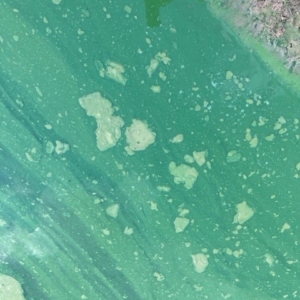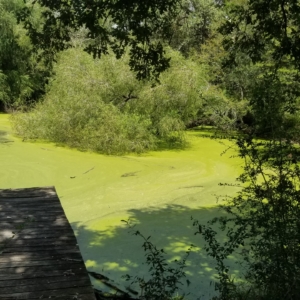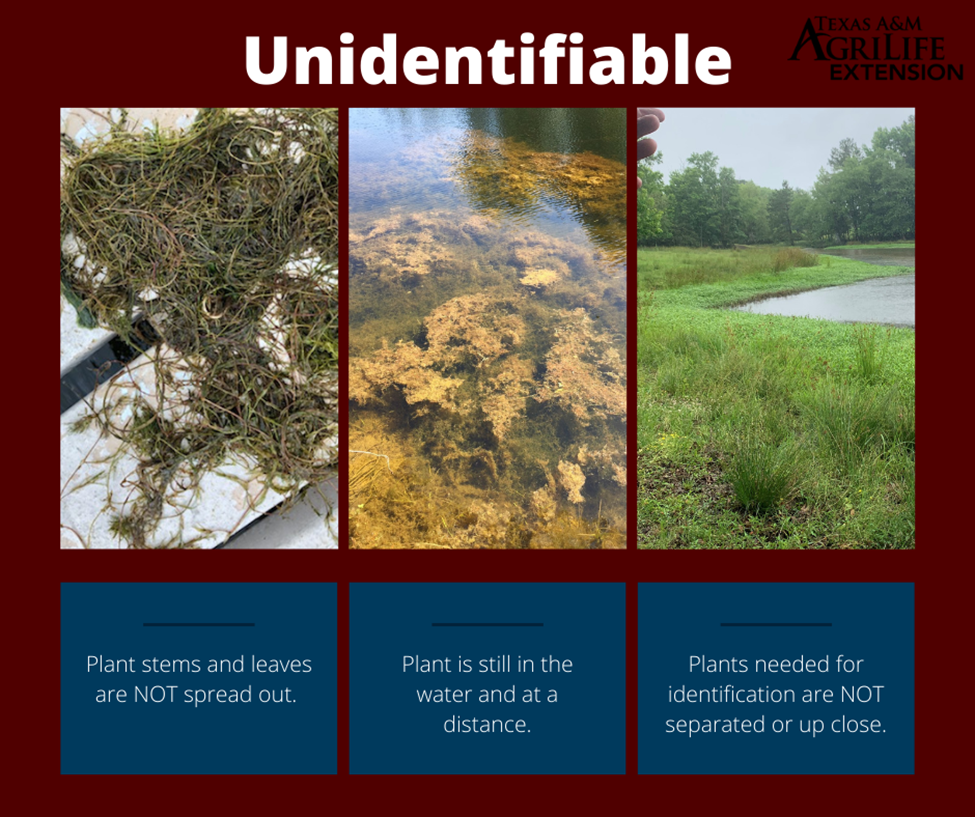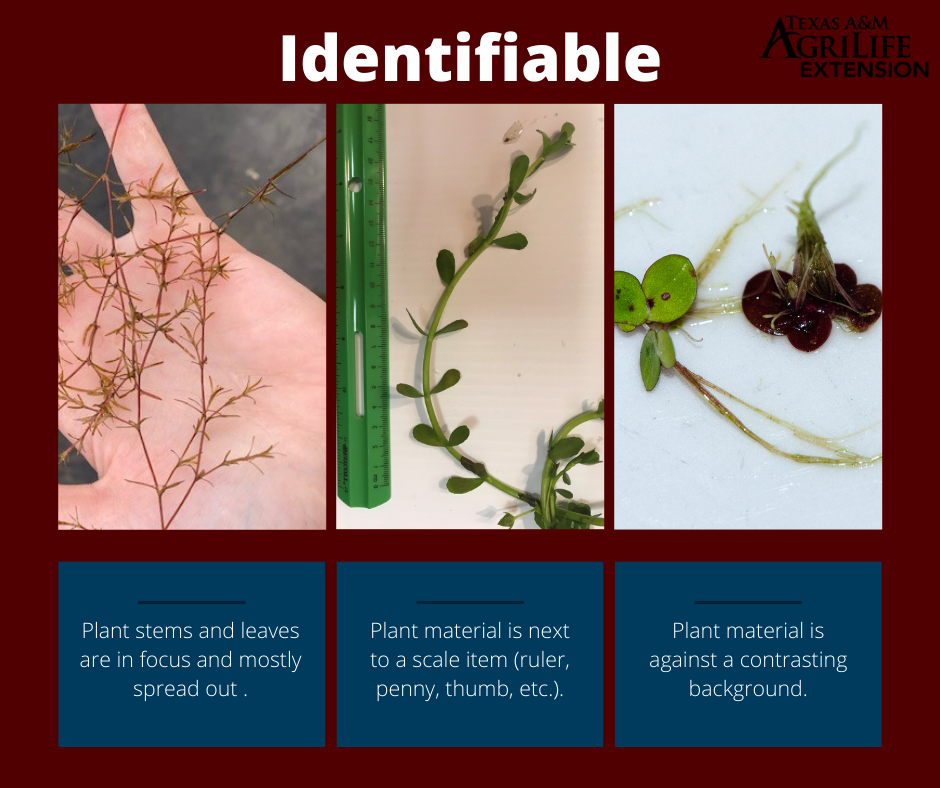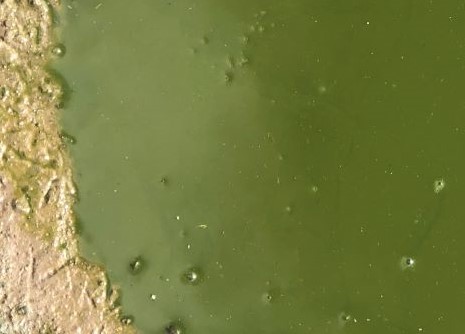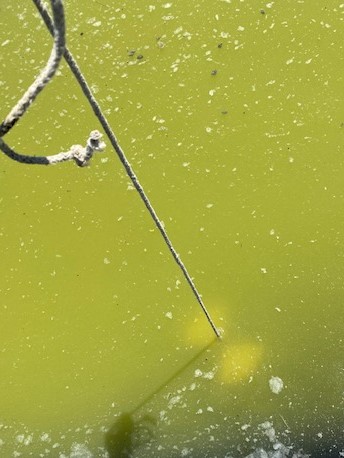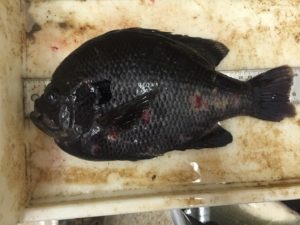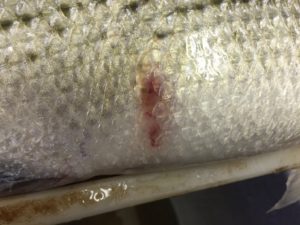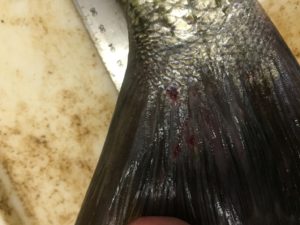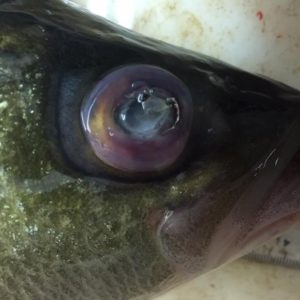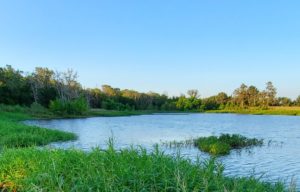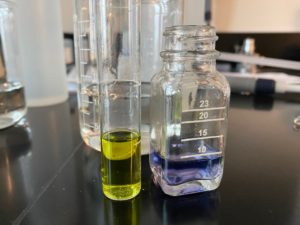As expected, August was a month with elevated temperatures and little rain in most areas of the state. This led to an influx of questions on the identification, control, and testing of blue-green algae directed to the Aquatic Diagnostics Laboratory (ADL).
The common name “blue-green algae” is a little misleading for cyanobacteria species since they are in fact, photosynthetic bacteria that can have many different growth forms. Some cyanobacteria species considered to be similar to true planktonic algae species and are mixed evenly throughout the water column, not giving off any visual cues. Other, more visible cyanobacteria species can be found floating around the shoreline in various growth forms, largely characterized as “spilled paint”, globules, or mat forming. Furthermore, noticeable cyanobacteria blooms are not always “blue-green”. They can appear green, yellow, brown, red, purple, etc. due to protein complexes that produce various pigmentations in their cells.
See below for several examples.
Cyanobacteria should not be confused with golden alga (Prymnesium parvum) or Euglena (Euglena spp.).
Golden alga are pigmented to give off a golden appearance, and are commonly found in waters with high salinity or rich in minerals during cooler months. While golden alga blooms do produce toxins and pose a threat to aquatic organisms, there is no known direct threat to humans, wildlife, livestock, or pets. Whereas, Euglena can be found in any water body and even soil. Euglena are unique in the fact that they can change color rapidly depending on sunlight, going from green to a rusty red within minutes. A good indication that a pond is experiencing an Euglena infestation versus a cyanobacteria bloom is the water changing color within a 24 hour period, becoming more red with more sunlight.
Sometimes to the untrained eye, a cyanobacteria bloom may also be confused with what is actually an infestation some of the world’s smallest flowering plants, watermeal (Woffia spp.). Like some cyanobacteria species, they are bright green and can be found heavily concentrated along the edges and in downwind areas of a pond. However, upon closer inspection, watermeal will have a seed-like appearance with a gritty texture.
These common misidentification mistakes may seem irrelevant but each of these groupings have unique survival strategies which plays a huge role in management.
There are no reporting or monitoring programs for cyanobacteria at the state or federal level in private waters. If you believe that you are experiencing a fish kill related to cyanobacteria issues, you should contact the Texas A&M AgriLife Aquaculture Extension Specialist, Dr. Todd Sink . The ADL can test for cyanotoxins in water but testing is expensive and does not always lead to definitive answers. See “Texas A&M AgriLife Aquaculture Specialist Addresses Algae-related Dog Deaths” for more information on testing. The ADL does not test fish tissue. Cyanobacteria issues involving wildlife or livestock can be directed to the Diagnostic Toxicologist at Texas A&M Veterinary Medical Diagnostic Lab, Dr. Catherine Barr, and Texas A&M AgriLife Extension Specialist, Dr. Thomas Hairgrove. To a confirm that cyanotoxins are the cause of death for livestock or wildlife, a necropsy is recommended over a water sample. More information on the management of cyanobacteria, can be directed to the Texas A&M AgriLife Aquatic Vegetation Management Program Specialist, Brittany Chesser.
References & Resources:
